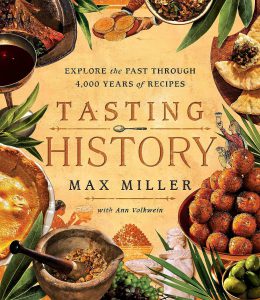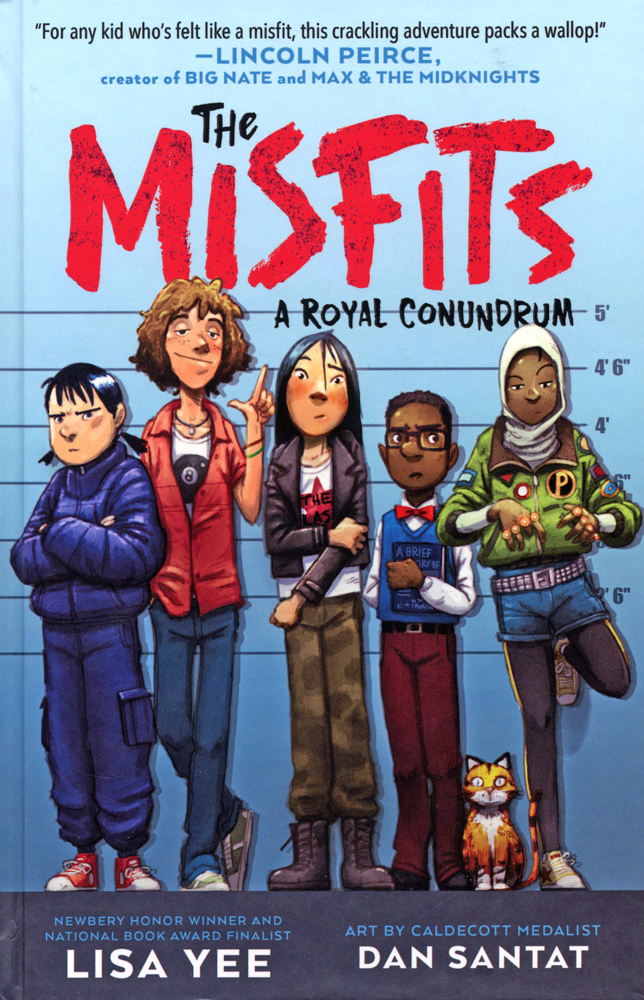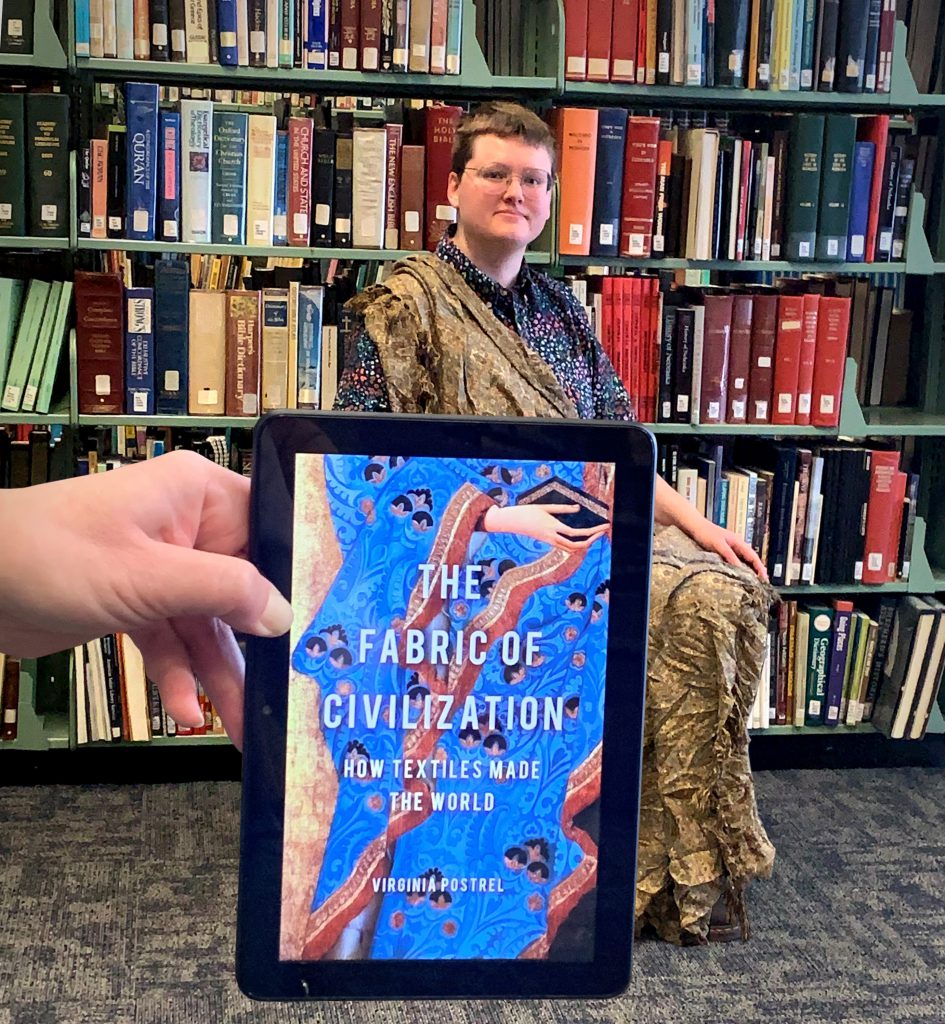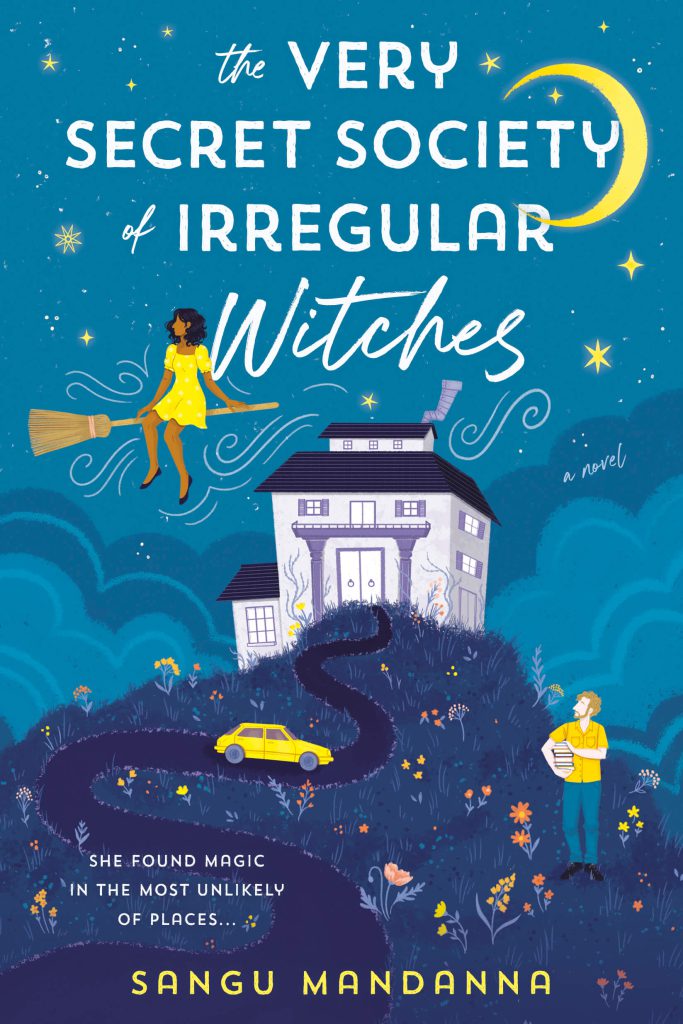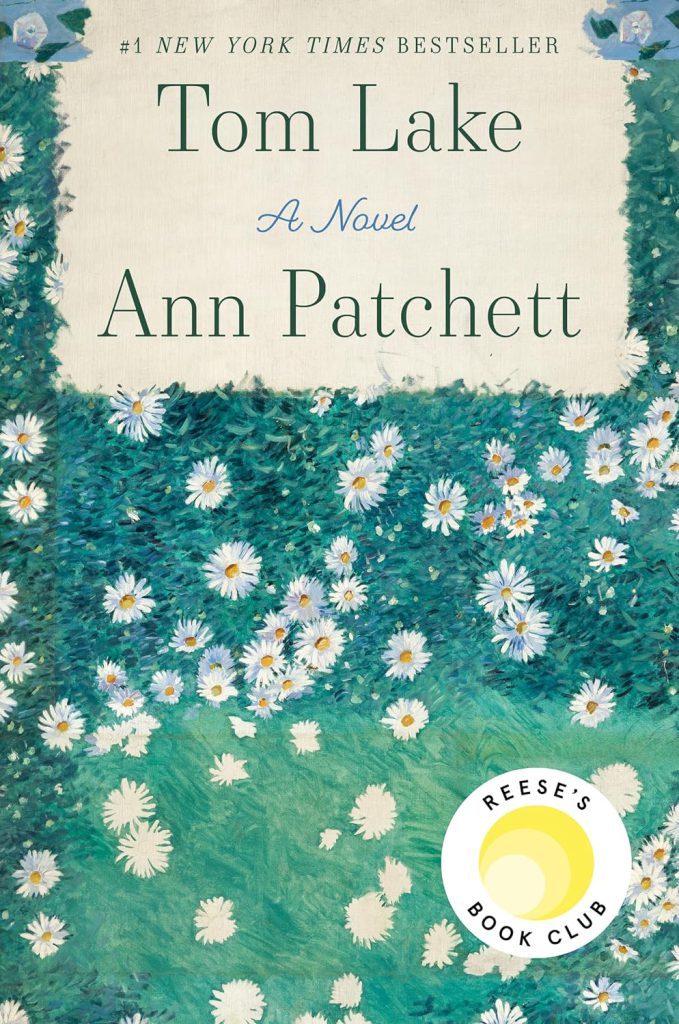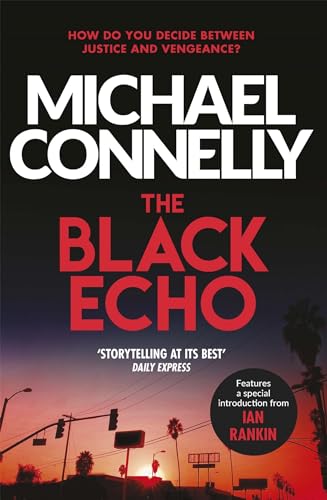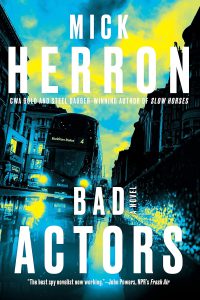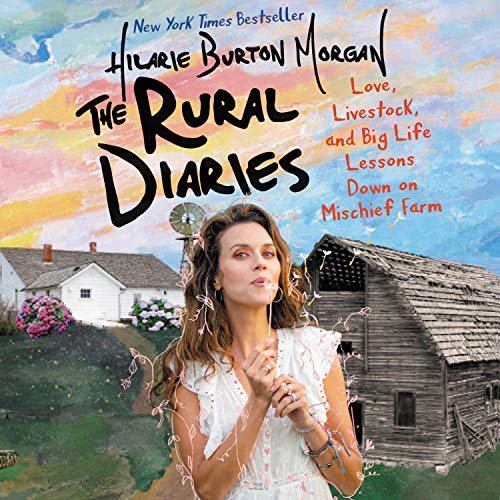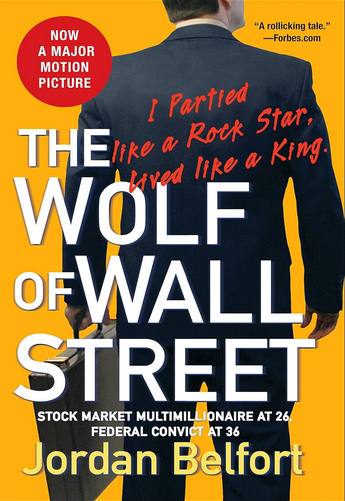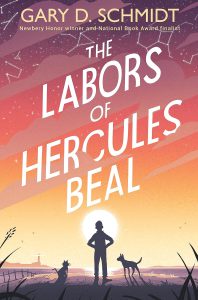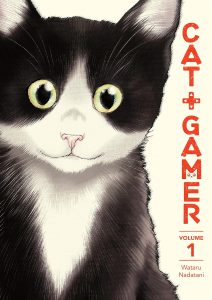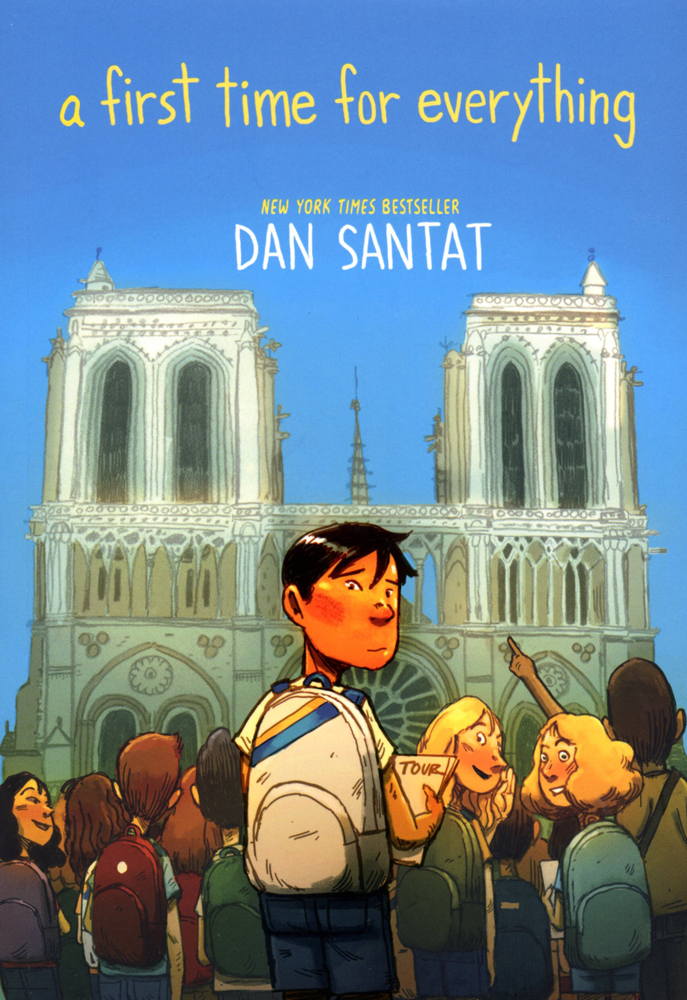Search the Blog
Categories
- Books & Reading
- Broadband Buzz
- Census
- Education & Training
- General
- Grants
- Information Resources
- Library Management
- Nebraska Center for the Book
- Nebraska Memories
- Now hiring @ your library
- Preservation
- Pretty Sweet Tech
- Programming
- Public Library Boards of Trustees
- Public Relations
- Talking Book & Braille Service (TBBS)
- Technology
- Uncategorized
- What's Up Doc / Govdocs
- Youth Services
Archives
Subscribe
Tag Archives: Friday Reads
Friday Reads: Tasting History by Max Miller
In February 2020, Max Miller posted his first Tasting History video to YouTube. A week later COVID-19 hit, and he was furloughed from his job. As the world entered the beginning of the pandemic lockdown, people went online, looking for entertainment, distraction, and connections. Tasting History was there. And the rest is, well, history.
Now, his viral video series has become a cookbook, Tasting History, Explore the Past through 4,000 Years of Recipes. Full disclosure: I haven’t cooked anything from this cookbook yet, I’ve just been enjoying reading through it so far.
We have been watching the Tasting History videos almost from the beginning, so when Max announced there would be a cookbook coming out, I knew we had to have it. And I was not disappointed.
The videos are a combination of recipe demo and history lesson, and that format has been carried over into the cookbook.
The book is arranged by geographic area: The Ancient World, The British Isles, Continental Europe, The Near & Far East, and The New World. Within each section the recipes are from oldest to newest. The oldest being Stew of Lamb, from Babylon, c. 1740 BC. The most recent recipes are both from 1914: Simnel Cake from England and Pecan Pie from Texas. Each recipe includes a few paragraphs about the history of the dish and the area of the world it originates from.
Since many old recipes do not provide precise measurements, or ingredients that we may recognize or have access to today, Max has re-created them as best as he can, based on his own cooking and historical knowledge. If you watch his videos, he does taste each dish, and he doesn’t always like them. But, that’s part of the fun and experimentation.
I think Tasting History, both the cookbook and the video series, is perfect for foodies, history buffs, or foodie history buffs. Max is still making videos, and I look forward to watching the new ones every week. A fun tip: he is a big Pokemon fan, and there is always a figure or plush in the background of each video that relates to the dish he is making. See if you can find them all!
Friday Reads: The Misfits: A Royal Conundrum by Lisa Yee
Olive Zang (almost 12) doesn’t really fit in – at school, with friends (what friends?) or even with her mom and dad. They are always gone on a trip for work, and seem to not really notice her. This time, before they leave again, they put her in a boarding school located on an island in San Francisco Bay.
Once she arrives at RASCH (Reforming Arts School) she undergoes an unusual set of tasks as an aptitude test for placement in the school. Once placed with Pod 101 she is surprised at how quickly the group of five bonds. They are hastily put into training to prepare them to be a contributing group for a secret crime fighting organization. Soon the very existence of the school (the first one where Olive feels connected and appreciated) is on the line, can The Misfits (her group) help capture a jewel thief? Will they help or hinder the effort?
As Kirkus says, “A fantastical blend of quirky characters and goofy adventures.” (11/1/23) Includes occasional black and white drawings by Dan Santat. This is the first book of a new series aimed at grades 3-6 or so.
Yee, Lisa. The Misfits: A Royal Conundrum. Random House, 2024.
Friday Reads, Mickey 7, by Edward Ashton
Mickey 7 by Edward Ashton is hard science fiction set in the far future. Mickey Barnes was born on a colony world where the hardest part of settling the colony is over. The planet is terraformed, and it’s safe to live there. Life is nearly ideal, except Mickey has no scientific or technical talents; he’s a historian on a world where everything can be looked up online. He does get a subsistence pay, but he’s gotten into deep debt, and needs to get off the planet, and there’s only one way off—the colony ship that’s been put together at great expense to the colony. Everything is weighed to the last milligram, and even the colonists pared down belongings aren’t allowed on, at the last minute. And his only way on is to become an “expendable.” The one member of the new colony that can die and be printed from a vat, with his mind transferred. You see, on the trip, and in the settlement, the robots they have can’t be replaced, but the expendable can. Plus, they have found, that the human body takes longer to shut down in adverse situations, like intense heat or radiation, than the electronic bots.
The story starts in real time stream, starting with Mickey 7, on the new colony world, an ice planet, falling down a crevice, and getting slightly (for him) injured. His air cover won’t come to help him, for fear of the creepers, the local life forms. He’s too deep to be rescued, but is rescued by a huge creeper, and set outside tunnels running under the planet’s surface. This is the source of the latest problem, when the air cover flyer got back to the settlement, he reported Mickey dead, so number 8 was printed. And Mickey 7 returned. The colony can’t support one more person, but neither want to die. There is a taboo about having more than one duplicate existing at a time. The explanation of the taboo, Mikey’s multiple deaths, and research into how other colonies have begun are the rest of the story. The author handles several heavy themes quickly, with humor. Where do you go for privacy, in a colony with just public spaces, with only under 200 people, when you can’t be in your room? Not being seen by the same people in overlapping times is much more difficult than one would suppose, and Mickey 8 is far less concerned about dying, that Mickey 7.
And then there are the creepers. When the planet was surveyed, it was done from their home planet. Since no industry was detected, and it seemed to have enough oxygen, and was just in the “Goldilocks zone” for life, it was thought habitable. When they got there, it was covered in ice, with unbreathable air. The creepers showed up, and seemed to be mere animals. However, Mickey discovers that their tunnels are evenly spaced at one hub. He has had a sneaking feeling for a while that they may be sentient. Which is just another of Mickey 7’s problems—to report, or not report. Especially since he believes, the leader of the expedition will not only end his life, but the indigenous life forms, too. So, of course, it gets much more complicated from there.
An interesting, and surprisingly funny stand alone, with some deep thinking hidden inside.
Mickey 7, by Edward Ashton, hardback, St. Martin’s Press, ISBN 978-1-250-27503-6, 27.99.
Friday Reads: Unbroken: My Fight for Survival, Hope and Justice for Indigenous Women and Girls by Angela Sterritt
Several years ago, I heard my dad scream in the middle of the night. It was such a foreign sound I thought it was leftover from the dream that had woken me up in the first place. I froze on high alert, listening. Nothing. I had nothing in my memory to compare the sound against, so it was easy to quietly dismiss the scream as a dream.
Months later, my dad and I were watching a movie about missing and murdered indigenous women and I found out my aunt had been murdered long before my life was even a possibility. He said the only time he ever screamed was that night when he woke up and saw her face next to his bed. The scream was real, and I did nothing. I didn’t know what to do with that information. I wanted to know more, but nobody ever speaks her name. The pain is still too great. There are probably others I don’t know about who were lost.
So I read Unbroken: My Fight for Survival, Hope, and Justice for Indigenous Women and Girls by Angela Sterritt, a Native journalist who grew up on the streets of Vancouver, Canada. I’ve read a lot on this topic. The book is part memoir and part investigative journalism as Sterritt blends together her own story of survival with the stories of those who were lost along the Highway of Tears in British Columbia. This is a stretch of highway where more than 40 Indigenous went missing or were found murdered. I thought it would be hard to read, but it wasn’t. Each story is filled with an equal amount of love and heartache. As I read, I wondered about my aunt’s story.
Sterritt tells these stories because “She could have been me”. I share the book because this problem is bigger than Canada. My aunt was found in Seattle. In the state of Washington alone, in a single year, over 5,000 Indigenous women and girls went missing. In smaller numbers, similar stories can be found in Alaska and other parts of the nation. As Sterritt shared her experience of walking the same streets as these lost women, I realized that I probably walked on the same street where my aunt lost her life. I’ve been to that area in Seattle several times, often at night. The statistics were mind-boggling. The stories struck me to the core.
As I read deeper, I remembered my mom telling me that I shouldn’t wear my beaded earrings, even though I love making them. They make me feel good. She wouldn’t say why, but she was disturbingly adamant that I shouldn’t wear them. At the time, I interpreted this as disrespecting a heritage that wasn’t her own. I wore them secretly in rebellious Native pride. Now I realize I was missing vital information. My aunt was murdered by a serial killer targeting Native women in Seattle. On the wrong streets, those earrings make me a target. I still make and wear my beaded earrings proudly, but when the shadows come out at night, I hide my heritage in a jewelry box in my purse. 5,000 women in a year. She could have been me.
I used to lay awake at night wondering if I would wake up in the dead of night and see her face. Would I recognize her? Did she spill over from a nightmare my dad was having? Would I share the same dream? I wondered if the desecration of murder was so powerful it could scream through the generations.
All I know is that this book was a journey for Sterritt. It was a journey for me. The stories of these women deserve to be told. Sterritt lived a hard life, but she emerged Unbroken. She seeks justice for the women who were lost along the Highway of Tears. She uncovers unbelievable acts of racism and unfounded hatred for Indigenous people. She shows how law enforcement ignored the problem and more went missing. She refuses to allow the media or the public to turn a blind eye to difficult topics. She lived on the wrong end of justice for long enough to show she speaks the truth.
Most of all, she shows how Indigenous women can survive and thrive in life. This book may be hard for some to read, but knowledge is power. Now I know what my earrings really mean. It’s not fair or just, but I have the power to make myself a little bit safer. It did help in a gas station parking lot late one night. That night, I was white. The world should know that statistically, the world is more dangerous to Native women. Read and learn the root causes of these terrifying numbers, especially if you have a Native population. Help keep that population alive.
STERRITT, ANGELA. Unbroken: My Fight for Survival, Hope, and Justice for Indigenous Women and Girls. GREYSTONE BOOKS, 2024.
Friday Reads & #BookFaceFriday: Houses with a Story, by Seiji Yoshida
Sometimes art imitates #BookFaceFriday
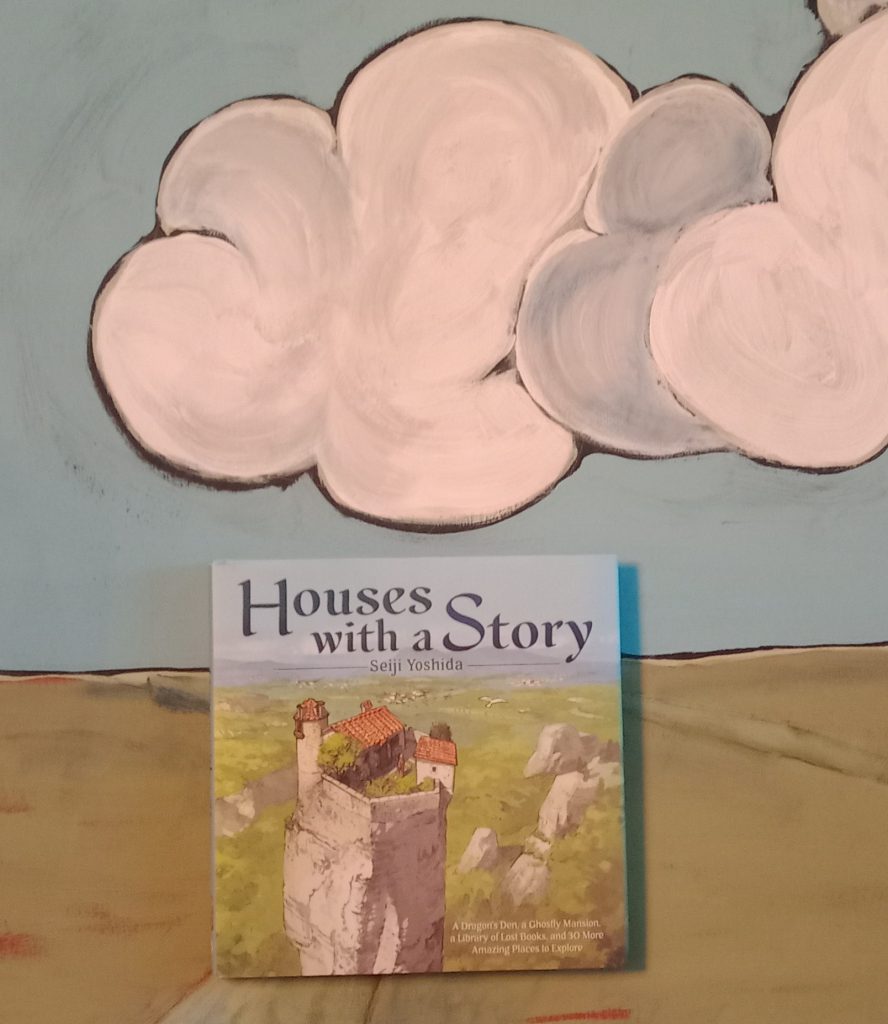
After the holiday frenzy I needed to read something that would serve as a mental palate cleanser–the literary equivalent of a deep, cleansing breath. Houses with a Story, by Seiji Yoshida, fit the bill.
Yoshida, a Tokyo-based artist who works as a professional background illustrator in the game/anime industry, first published Houses with a Story in Japan in 2020. The English translation came out in November 2023. Language isn’t the most important component of this book, however. Instead, detailed illustrations of over 30 imaginative dwellings, along with brief text hinting at a backstory for each, predominate.
Each of Yoshida’s 30+ houses get at least a two-page spread featuring both a street view and a cut-away drawing that lets you see inside the structure’s various rooms. This allows you to view nooks and crannies, furnishings, and basic possessions. Sketched floor plans are also sometimes included.
One of my favorite dwelling/character combos is the Methodical Witch’s House. Her small abode is divided into two rooms by a partial wall, which includes a two-sided hearth designed to heat both. The witch grows herbs and vegetables in an outdoor garden (also depicted), which she then harvests and uses in cooking and medicine. According to a “Concepts and Commentary” section at the back of the book, Yoshida imagines this house existing in mid-nineteenth century Scotland.
As a librarian, I also love Yoshida’s Library of Lost Books. This temple-like compound of unknown origin exists in an imaginary, isolated, Tibet-inspired landscape. According to the accompanying annotation, it supposedly contains “all the books that have been entirely lost to this world.” The lone librarian’s main duty is to comb the shelves for newly lost books that appear daily in order to catalog and organize them—a seemingly unending task.
The publisher of Houses with a Story recommends it for fans of Studio Ghibli, which makes sense given their similar aesthetic. I also think that adults who enjoy looking at architecture, floor plans, and photo spreads of enchanting and unusual living spaces will be enthralled. Finally, if you were a kid who loved poring over Richard Scarry, I Spy, and Where’s Waldo books, this might be a good selection for adult you!
You can find “Houses with a Story: A Dragon’s Den, a Ghostly Mansion, a Library of Lost Books, and 30 More Amazing Places to Explore” by Seiji Yoshida and many more in Nebraska OverDrive Libraries! Libraries participating in the Nebraska OverDrive Libraries Group currently have access to a shared and growing collection of digital downloadable audiobooks and eBooks. 194 libraries across the state share the Nebraska OverDrive collection of 26,174 audiobooks, 36,611 ebooks, and 5,210 magazines. As an added bonus it includes 130 podcasts that are always available with simultaneous use (SU), as well as SU ebooks and audiobook titles that publishers have made available for a limited time. If you’re a part of it, let your users know about this great title, and if you’re not a member yet, find more information about participating in Nebraska Overdrive Libraries!
This week’s BookFace “model” is a painting by the late Lincoln artist Larry Griffing, which hangs in librarian Lisa Kelly’s home. Thank you Lisa for capturing this photo for us!
Love this #BookFace & reading? We suggest checking out all the titles available in our Book Club collection, permanent collection, and Nebraska OverDrive Libraries. Check out our past #BookFaceFriday photos on the Nebraska Library Commission’s Facebook page!
Yoshida, Seiji. Houses with a Story. Abrams, 2023.
Posted in Books & Reading, General
Tagged #BookFace, bookfacefriday, Friday Reads, Houses with a Story, Reading, Seiji Yoshida
Leave a comment
Friday Reads: The Indigo Girl
The Indigo Girl, by Natasha Boyd, is an exceptional example of historical fiction, one of my favorite genres. In this incredible story of ambition, betrayal, and sacrifice, an extraordinary sixteen-year-old girl in Colonial South Carolina defies all expectations to achieve her dream.
“The year is 1739. Eliza Lucas is sixteen years old when her father leaves her in charge of their family’s three plantations in rural South Carolina and then proceeds to bleed the estates dry in pursuit of his military ambitions. Tensions with the British, and with the Spanish in Florida, just a short way down the coast, are rising, and slaves are starting to become restless. Her mother wants nothing more than for their South Carolina endeavor to fail so they can go back to England. Soon her family is in danger of losing everything.
Upon hearing how much the French pay for indigo dye, Eliza believes it’s the key to their salvation. But everyone tells her it’s impossible, and no one will share the secret to making it. Thwarted at nearly every turn, even by her own family, Eliza finds that her only allies are an aging horticulturalist, an older and married gentleman lawyer, and a slave with whom she strikes a dangerous deal: teach her the intricate thousand-year-old secret process of making indigo dye and in return—against the laws of the day—she will teach the slaves to read.
So begins an incredible story of love, dangerous and hidden friendships, ambition, betrayal, and sacrifice.
Based on historical documents, including Eliza’s letters, this is a historical fiction account of how a teenage girl produced indigo dye, which became one of the largest exports out of South Carolina, an export that laid the foundation for the incredible wealth of several Southern families who still live on today. Although largely overlooked by historians, the accomplishments of Eliza Lucas influenced the course of US history. When she passed away in 1793, President George Washington served as a pallbearer at her funeral.” [Audible]
This book is set between 1739 and 1744, and Natasha Boyd has done extensive research and masterful writing to form the story of a remarkable young woman whose actions were before her time. I listened to the Audible version, narrated by Saskia Maarleveld, and highly recommend this story about a little known piece of American history: the story of The Indigo Girl.
Friday Reads: The Very Secret Society of Irregular Witches
A whimsical and sweet story about found family, belonging, and magic. Mika Moon has been alone all of her life, raised by a series of nannies and forced to live by strict rules to protect and hide her magic (as all witches must do). She begins posting short witchy videos online, assuming no one will actually believe the simple magic tricks are real – until she gets a message offering her a tutoring job for three young witches.
When she arrives to “Nowhere House,” she meets the two caretakers, along with a retired actor, a grumpy/broody librarian, and the three girls who are very much in need of some magical guidance. She also finds that the mysterious archeologist, Lillian, who owns the house, has been out of contact for months and people are starting to ask questions which all threatens the girls’ safety. Mika knows if the kids are discovered (by other witches), they’ll be taken and split up so their magic doesn’t draw attention. No one at the house wants to find out what will happen if they’re discovered by non-witches.
But will the girls learn to reign in their powers? Will James, the librarian, trust Mika enough to let her help? Does he really hate her or is there something more developing between them? Where is Lillian? How is this connected to Mika’s own past? Could this odd group be the home and family that Mika has always wanted?
Mandanna, Sangu. The Very Secret Society of Irregular Witches. Berkley. 2022.
Friday Reads: Sure, I’ll Join Your Cult by Maria Bamford
Ever since a friend recommended her breakout television series, Lady Dynamite, I’ve been a fan of Maria Bamford and her singular comedy style. In her new memoir, Sure, I’ll Join Your Cult, she discusses her desire to belong to something, anything, that makes sense of her life and what’s happening in her brain—and how well that challenge goes, or doesn’t. You will be rooting for her as she describes her journey, and as she illustrates the characters she meets along the way—people and organizations that are more than willing to offer her the security she craves, in exchange for her continued insecurity in some other area of her life. She addresses heavy (sometimes very heavy! You’ve been warned! She will warn you too!) topics with both irreverence and gentleness, somehow. No other comedian is quite like Maria Bamford.
Bamford will talk about her mental health in fresh and honest and uncomfortable ways that will have you laughing out loud—so, you know, watch out for that if you’re listening to the audiobook on earbuds while you’re out in public. Her comedic timing is perfect, and she narrates accordingly, so it’s a great audiobook choice. There are some fun sound effects in the audiobook, to correspond with certain notes that appear in the printed book—it’s all thoughtfully explained at the beginning of the recording. I appreciated that the author and publisher took the time to make the audiobook succeed as a separate work on its own, and not suffer in the adaptation. I checked out the print book as well, though, to see the photos and illustrations. And to take a photo for Friday Reads, of course.
If you’re familiar with Bamford, you already know you want to read this book. It’s almost all new material, and she even warns you when she’s about to use jokes recycled from earlier routines. (Even those recycled bits are often presented with more context, so you won’t mind.) If you’re not familiar with her, you might be surprised to find that you’ve seen her (or heard her) in a number of series and other works (check out her IMDb credits here).
Bamford M. Sure I’ll Join Your Cult : A Memoir of Mental Illness and the Quest to Belong Anywhere. First Gallery Books hardcover ed. New York: Gallery Books; 2023.
Friday Reads, Tom Lake by Ann Patchett
Many times, I have selected audio books for their length but this time I selected for the narrator, Meryl Streep. Eleven and a half hours still left me wanting more. When it ended, I wondered, what will I do now? How can I follow that? Meryl’s voice is maternal, comforting, and restorative. Her delivery assures you everything will be all right. Even the author recommends listening to the book rather than reading the text.
The book is told through the voice of Lara, wife to Joe, and mother to 3 grown daughters and that makes it especially wonderful for Meryl to read. Set during the pandemic, all of her girls have returned home to the family orchard in northern Michigan. In the days of weeks of being sequestered, the girls encourage and cajole their mother to tell the stores of her young life when she shared the stage and a romance with a now famous actor, Peter Duke, in a summer stock theater called Tom Lake.
Time travels from the present to the past in the form of Lara recalling her youth mostly for the girls but also through interior thoughts shared only with the reader. For anyone who has lost young love and looks back, this is a familiar theme. Hindsight without nostalgia can bring clarity. Love during different ages of life and appreciating mature love.
This is a novel without drama or angst. One friend who read it agreed with me in calling the novel a warm hug. A bucolic story read to you by Meryl Streep. What are you waiting for?
Patchett, Ann. Tom Lake. Harper. 2023
Friday Reads: Harry Bosch Novels
I started this series by Michael Connelly after watching the first season of the Bosch TV show on Amazon, I was hooked and immediately put the first book in the series, “The Black Echo” (Little, Brown and Company, 1992.) It’s the first in the 24 book series. This series has also inspired the spin offs The Lincoln Lawyer and The Renee Ballard Detective series. I’m currently reading book five, “Trunk Music.”
So if you’re late to the game like I was, let me tell you a little about Harry Bosch. These procedural police novels follow LA homicide detective Hieronymus “Harry” Bosch as he doggedly pursues cases in Hollywood. A Vietnam vet and a perpetual loner, Harry doesn’t always play well with others, including the top brass. He can’t stand the politics that influence police work, it’s gotten him in trouble and cost him in his profession. But his hard-nosed approach to police work, an innate curiosity, and trusting his gut instincts make him an excellent detective and help him close cases in a department that sometimes has a less than 50% closure rate.
If you like the anticipation of a long series that follows familiar faces through thick and thin, a likable but morally gray protagonist, or a classic detective murder mysteries then this series is for you.
Connelly, Michael. The Black Echo. Little, Brown and Company. 1992.
Friday Reads: Bad Actors by Mick Herron
I don’t remember whether it was the Apple TV+ series or a book that started my interest in Mick Herron’s spy novels. In my view, they are equally good. Bad Actors is the eighth and latest in Herron’s Slough House series. There are also four novellas. Slough House is purgatory for disgraced British MI5 service rejects placed apart from headquarters to serve out their careers. Central to all books in the series is the Slough House cast of colorful characters referred to as the “Slow Horses” – the B-team, if you will. In Bad Actors you will find some of the same characters and new ones as well – flawed as they all are. There is also the usual clash of personalities, backstabbing and insults, along with quick and sharp dialogue.
Mick Herron is kind of, sort of, somewhat, loosely in the company of many good and popular authors from among the espionage genre. Herron’s writing is especially witty and unique. These are intricate spy books that are also full of dark humor.
The Bad Actors narrative evolves from the growing tensions between the UK and Russia and a series of mysterious and supposedly unconnected events. A protest at a London arms fair leads into violence, a high-level politician disappears, and a shady organization known as “The Outfit” emerges to manipulate events from afar. As it happens, dispatched on a sideline task, Jackson Lamb’s “Slow Horses” find themselves in the midst of the chaos – a charade of conspiracy involving the upper echelons of government. Jackson Lamb is the offensive, slovenly leader of this group of misfits. Imagine Jackson Lamb with the well-worn trench coat, loosened necktie, longish unwashed hair, and days of unshaven face. A veteran intelligence officer, Lamb is a secretive, perceptive and shrewd spook. As outcast as they are, and as ill viewed, Jackson’s crew manages to pull it together and come out on top in the end.
The Apple TV+ series enriches Herron’s books, creating interest and adding multitudes of Herron fans.
Herron, Mick. Bad Actors. Soho Crime. 2022.
Friday Reads: The Rural Diaries by Hilarie Burton Morgan
Growing in a small town, I had romantic notions of what it might be like be a farm kid. I would grow pumpkins, sweet corn, and strawberries. I could have as many animals as my heart desired, and not be limited by a tiny backyard or city codes. Over time, these longings waned, yet I still find myself curious about people that take that leap and bravely (or sometimes naively) switch up their life completely and follow a big dream. In Hilarie Burton Morgan’s case that meant trading city life for Mischief Farm in upstate New York.
Some of you may know Hilarie Burton Morgan for her acting career. She is best known for roles on One Tree Hill and White Collar. In 2009 she began dating The Walking Dead actor Jeffrey Dean Morgan and they married in 2019. Frankly, and I don’t usually have much interest in celebrity autobiographies unless I’m a fan of their work. I wasn’t familiar with any of Hilarie’s roles, but after recently listening to an interview about her second book, Grimoire Girl, I was intrigued. I found her spirited, smart, and a compelling storyteller. I decided to start with the audio version of her first book, The Rural Diaries, which is narrated by the author.
On the surface The Rural Diaries could seem like the plot of a cheesy Christmas movie, which is fitting since Hilarie has starred in several Christmas movies in recent years. The book tells of the meeting and evolution of her relationship with Jeffrey Dean Morgan, their decision to buy a cabin in upstate New York, and the couple’s love affair with the small town of Rhinebeck. Every leading actor needs a best friend and, in this case, the Morgans became friends with fellow Rhinebeck residents Paul Rudd and his spouse Julie Yaeger. When the owner of a beloved local candy shop passed away, the two couples purchased it. The Morgans also decided to put down real roots in the community and purchased a larger farm property they dubbed Mischief Farm.
The Rural Dairies is more than idealistic candy shops and romanticized rural life. Yes, they do acquire a menagerie of animals and grow a garden as you might expect, but there are other layers to the story. The farm helps Hilarie reconnect to her Virginia roots and she shares a variety of recipes accompanied by stories. The book also delves much deeper into other parts of Hilarie’s life, including the challenges of relationships and becoming a parent. After struggling with infertility and loss, she discovers meaning in acts of service. She finds solace in community and the deep connections built in their beloved small town.
Overall the book is a compelling mix of humor, heart, and heartbreak. I recommend the audio book as Hilarie’s narration adds emotion and layers to her storytelling. You can hear and get a better feel for her Virginia roots that influence her traditions, world view, and ability to tell a good story. I will definitely be giving her second book a read.
Morgan, Hilarie Burton. The Rural Diaries: Love, Livestock and Big Life Lessons Down on Mischief Farm. Harper One, 2020.
Friday Reads: The Wolf of Wall Street
The Wolf of Wall Street, written by Jordan Belfort, a/k/a the Wolf, focuses primarily on his time running the Long Island, NY brokerage house Stratton Oakmont. His story involves numerous crimes centered around various pump and dump schemes, securities fraud, and money laundering. The book came about when he was doing his time (of course Belfort was caught) and his cellmate encouraged him to write a book due to gut busting laughter when hearing his stories. His cellmate was none other than Tommy Chong (sentenced for selling paraphernalia online via his company, Nice Dreams).
Yes, this guy wasn’t a saint. Yes, he defrauded his investors, lied to the people around him, did copious amounts of drugs, committed multiple crimes, and didn’t treat his family well. But, you know what, the stories are entertaining, and in some sense the reader feels like they want to root for him. In his favor and against those he is maneuvering around in his business, and against the feds. To me, it feels much the same way one roots for Tony Soprano (yes, overall he’s a bad individual that does some bad things, but something about him is likeable). Even if you’ve seen the movie adaptation (2013, directed by Martin Scorsese), the book is recommend for the in-depth look into (as Belfort puts it) the lives of The Rich and Dysfunctional. It’s an easy read, and should be on the list of every low brow reader.
Belfort, Jordan. The Wolf of Wall Street. Bantam. 2008.
Friday Reads – The Labors of Hercules Beal by Gary D. Schmidt
I do read more age-appropriate books occasionally, I promise. But when my hold for The Labors of Hercules Beal became available, I tossed aside the mystery I was halfway through to dive into this instead. Whodunit? Who cares? Gary D. Schmidt is just that good.
If you have never read one of his middle-grade novels, start with The Wednesday Wars, or Okay for Now (both are available as Book Club Kits here at the Nebraska Library Commission!). If you are more familiar with Schmidt’s writing, this latest book will feel like coming home.
Hercules Beal is about to start 7th grade. But instead of joining his friends on the bus to the local public middle school, he will be walking to the Cape Code Academy for Environmental Sciences. He is not excited about this latest revelation, but not surprised. Over the last 18 months, it’s been nothing but bad news. He lost both of his parents in The Accident. His older brother Achilles reluctantly moved home, leaving his globe-trotting journalism career to run the Beal Family Farm and Nursery. His request for a pet dog was overruled in favor of a pet rabbit named “Honey Bunny.” Oh, and his new teacher this fall is a retired Marine lieutenant colonel. That’s a lot of rotten luck for a kid who hasn’t yet hit his Beal Family Growth Spurt.
But middle school begins, as sure as the sun rising over the dunes of Cape Cod, and Hercules does grow, both in his statute and in his understanding of what great possibilities life still has in store. Lt. Colonel Hupfer gives each student in his class a yearlong assignment based on a mythological topic. Our “hero” is tasked with performing the Twelve Labors of Hercules, or as close to them as he can manage. As he struggles through each labor, he receives help from some unexpected sources. Many things go wrong… so very, very (often hilariously) wrong! But many more go just heart-breakingly right.
That is my favorite aspect of Schmidt’s novels; how wonderfully he captures the ups and downs of adolescent life. He makes me laugh out loud, and then burst into tears in the next chapter. Will he have the same affect on actual adolescents? Maybe, maybe not. Maybe I’m more susceptible to the tear-jerking scenes because I’ve already been through this part of life and I know how it turns out. But even if you are a 13 year old kid and you don’t cry when the [redacted so you can find out for yourself], I hope you can at least recognize that when Schmidt’s characters feel alone, but they are not actually alone; there are people looking out for them, cheering them on, ready to help when things get tough. And if you are well past middle school, as I am, I hope you can remember what those years were like, and keep an eye out for those kiddos that might need a supportive grownup in their corner.
Schmidt, Gary D. (2023). The Labors of Hercules Beal. Clarion Books.
Posted in Books & Reading, General
Tagged books, Friday Reads, Gary D. Schmidt, juvenile fiction, middle grade, mythology, Reading
Leave a comment
#BookFaceFriday “Chasing Bright Medusas” by Benjamin Taylor
O #BookfaceFriday!
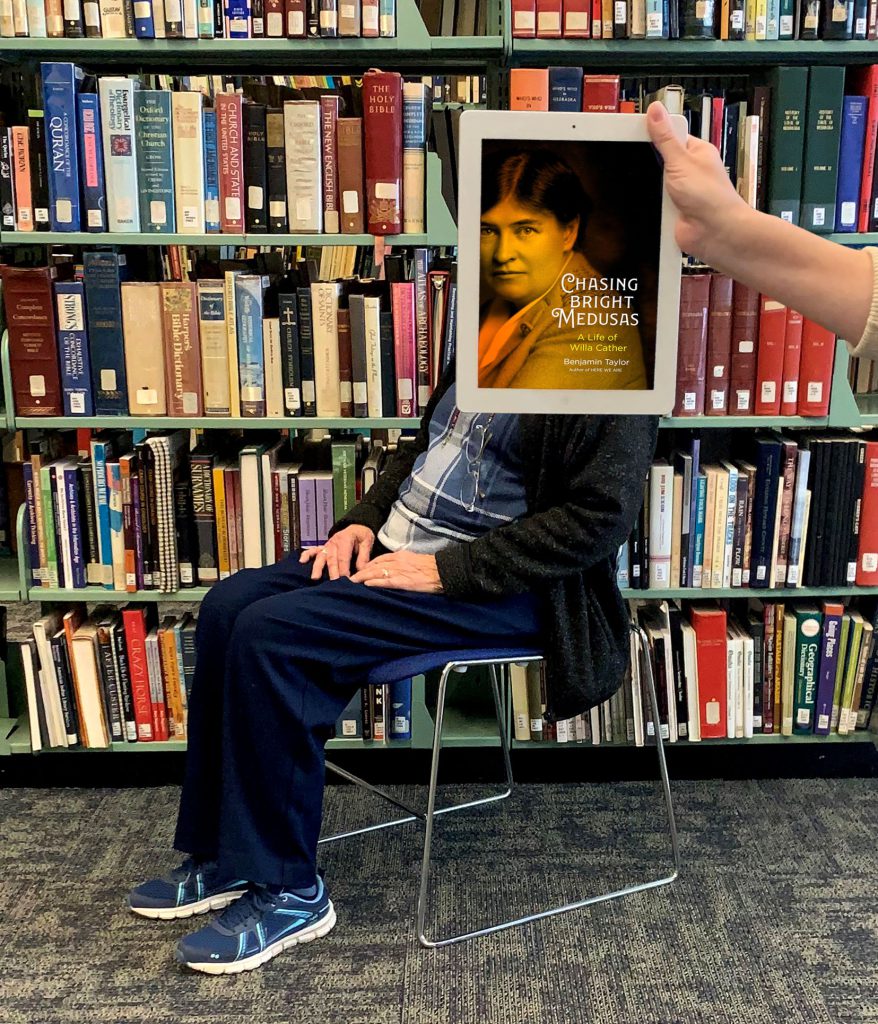
This week’s BookFace is brand new to our collection! Next week, December 7th, we’ll be celebrating Willa Cather’s 150th birthday. What better way to get the party started than with highlighting all of Cather’s works, as well as nonfiction titles about Willa Cather, like “Chasing Bright Medusas: A Life of Willa Cather” by Benjamin Taylor (Viking, 2023.) This title is available as an eBook and Audiobook on Nebraska Overdrive Libraries, we also have several of Cather’s books on Nebraska Overdrive Libraries, including My Ántonia, Death Comes for the Archbishop, and Song of the Lark. NLC also has nine of Willa Cather’s books available as Book Club Kits. Let us know your favorite book by or about Willa Cather as we celebrate one of Nebraska’s most treasured authors.
“…Taylor provides a remarkably revealing account of the life and creative output of Willa Cather…Taylor’s connection of Cather’s personal life and her literary inventions is consistently astute, and the exuberant force of her imagination emerges vividly…the author presents a rewarding and perceptive portrait, providing a valuable assessment of Cather’s intriguing character and the enduring importance of her oeuvre. Keen, insightful commentary on a literary master.”
— Kirkus Reviews
Speaking of celebrations, today’s Bookface model is being honored today as she ends her time with us here at the Nebraska Library Commission and begins her retirement! Kay Goerhing, our Senior Readers Services Advisor with the Talking Book & Braille Service, is a 44 year veteran of the Library Commission, and will be truly missed by staff and patrons alike. Congratulations Kay!
Find this title and many more through Nebraska OverDrive! Libraries participating in the Nebraska OverDrive Libraries Group currently have access to a shared and growing collection of digital downloadable audiobooks and eBooks. 191 libraries across the state share the Nebraska OverDrive collection of 21,696 audiobooks, 35,200 eBooks, and 3,964 magazines. As an added bonus it includes 130 podcasts that are always available with simultaneous use (SU), as well as SU ebooks and audiobook titles that publishers have made available for a limited time. If you’re a part of it, let your users know about this great title, and if you’re not a member yet, find more information about participating in Nebraska Overdrive Libraries!
Love this #BookFace & reading? Check out our past #BookFaceFriday photos on the Nebraska Library Commission’s Facebook page!
Friday Reads: Cat + Gamer by Wataru Nadatani
I am a gamer, and I have had cats as pets for almost my entire life. So, obviously, I had to read this book.
Cat + Gamer is the first volume of the English translation of the Japanese manga, written and illustrated by Wataru Nadatani. Dark Horse Comics is releasing the collected volumes in North America. So far three volumes are available, with five more to come.
The manga tells the story of Riko, an incredibly efficient office worker. She always goes above and beyond when it comes to her job, and leaves work promptly at 5pm every day. Her co-workers try to invite her to join them for after work hours socializing, but she’s never available. Some of them think she’s anti-social, others say she’s just a very private person.
But, they are all curious – what is her secret life? Well, Riko has a passion for video games! All of her free time is spent playing video games, researching all of the side quests and boss fights, making sure she doesn’t miss a thing. As far as she’s concerned, it’s the most fun and rewarding thing to do.
Until one day her life changes forever. A stray kitten is found in the parking lot of her office building, and for reasons she doesn’t understand, she agrees to take it home.
The book alternates between her viewpoint and the cat’s viewpoint, as they both learn about each other. Riko uses her gaming skills to raise the kitten, ‘leveling up’ the tiny animal, vowing to ‘max out this cat!’.
Cat + Gamer is a story that will obviously appeal to gamers and cat owners. But, anyone looking for a fun, quirky read will appreciate it, too. And don’t worry, the gaming parts of the book are described in a way that I think anyone can understand.
I’ve only read the first volume so far, but I enjoyed it so much, I’m definitely going to be picking up the others.
#BookFaceFriday “The Leftover Woman” by Jean Kwok
Pass the #BookfaceFriday!
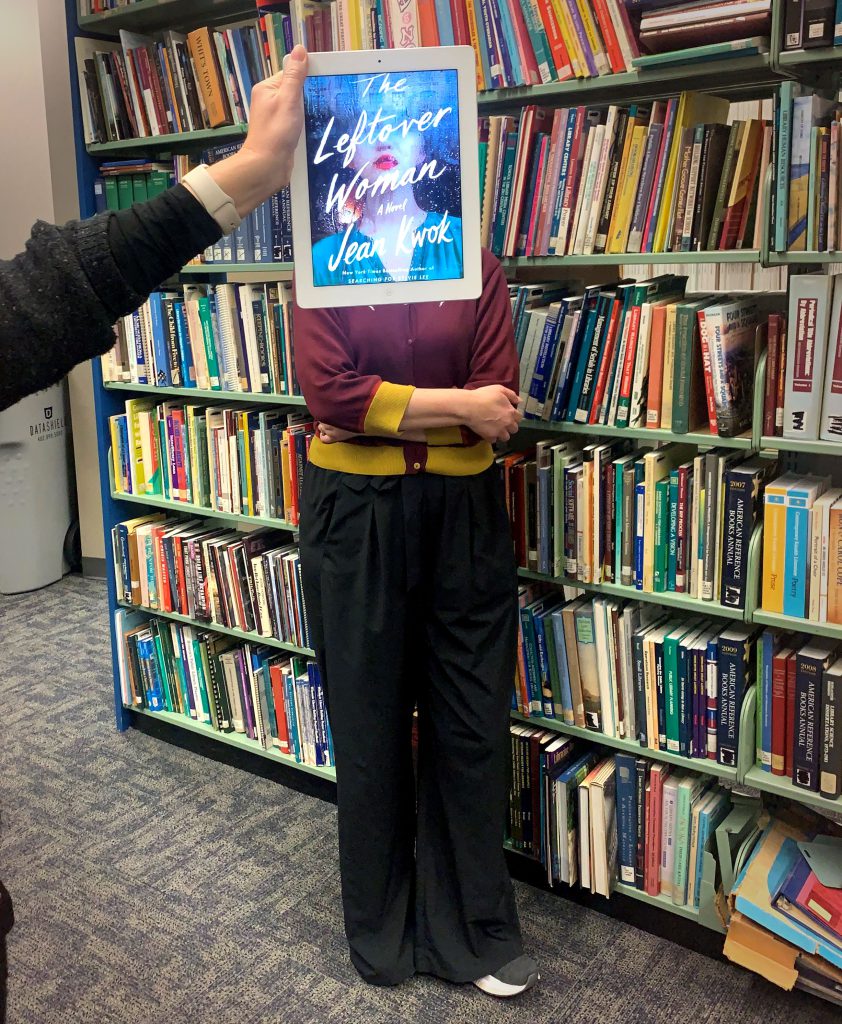
This week’s BookFace selection is all about what to do with those pesky Thanksgiving leftovers. Just kidding, “The Leftover Woman: A Novel” by Jean Kwok (William Morrow, 2013) is all about motherhood and identity.
This title is a must for your TBR list. “The Leftover Woman” is available as an eBook and Audiobook on Nebraska Overdrive Libraries!“An utterly riveting novel about two very different mothers, The Leftover Woman is not only an absolutely propulsive thriller but also a profound exploration of poverty and privilege, oppression and escape, desire and the self. This spellbinding narrative of immigration and hidden identity proves in so many ways that love has no boundaries.”
— Lan Samantha Chang, author of The Family Chao
Find this title and many more through Nebraska OverDrive! Libraries participating in the Nebraska OverDrive Libraries Group currently have access to a shared and growing collection of digital downloadable audiobooks and eBooks. 189 libraries across the state share the Nebraska OverDrive collection of 21,696 audiobooks, 35,200 eBooks, and 3,964 magazines. As an added bonus it includes 130 podcasts that are always available with simultaneous use (SU), as well as SU ebooks and audiobook titles that publishers have made available for a limited time. If you’re a part of it, let your users know about this great title, and if you’re not a member yet, find more information about participating in Nebraska Overdrive Libraries!
Love this #BookFace & reading? Check out our past #BookFaceFriday photos on the Nebraska Library Commission’s Facebook page!
Posted in Books & Reading, General
Tagged bookfacefriday, Ebook, Friday Reads, Jean Kwok, Nebraska OverDrive Libraries, Novel, OverDrive, Reading, The Leftover Woman
Leave a comment
Friday Reads: A First Time for Everything by Dan Santat
Announced yesterday, A First Time for Everything has won the National Book Foundation Award for Young People’s Literature.
It is on my Summer Reading Program list for 2024 and is a memoir of a three week school trip to Europe in 1989, the summer after 8th grade. In middle school Dan learned to be “…quiet. Small. … invisible.” (p. 11) Then one day, at the end of a school assembly Dan was unexpectedly asked (forced) to give his speech as practice for the speech tournament. It was a poem by A. A. Milne. He was ridiculed.
Then he took the three week school trip to Europe. Quiet at first, he slowly begins to have fun with some of the other students. And actually enjoying the trip. He does get lost in the middle of the night in France, but manages to steal a bike and find his way back (not proud of stealing the bike). Kirkus says, “Full of laughter and sentiment, this is a nudge for readers to dare to try new things.” (12/15/22)
Other Finalists for the Award for Young People’s Literature were:
Gather by Kenneth M. Cadow
Huda F Cares? by Huda Fahmy
Big by Vasti Harrison
The Lost Year: A Survival Story of the Ukrainian Famine by Katherine Marsh
Visit their web page to learn more. You can also see the winners and finalists in the other four categories on this web site.
Dan Santat is an author and illustrator of a variety of children and teen books, including After the Fall (How Humpty Dumpty Got Back Up Again), The Aquanaut, Sidekicks: A Graphic Novel, and Lift by Minh Lê and illustrated by Dan Santat.
Santat, Dan. A First Time for Everything. First Second/Macmillan, 2022.
Friday Reads: Goldenrod by Maggie Smith
I am going to come out and say it: when our license plates were the meadowlark and the goldenrod, I loved them. I thought they were beautiful. Goldenrod may look like the allergy sufferer’s nemesis, ragweed, but is it innocent, blameless, unfairly maligned! A lovely, important part of our ecosystem, and a worthy state flower.
That was not why I chose to read Maggie Smith’s 2021 poetry collection, Goldenrod, but it was a point in her favor. One of my favorite poems is actually Smith’s “Good Bones.” My copy of Goldenrod was gifted to me from a friend and former mentor; it is possible that I have shared “Good Bones” to my social media so often that I have become associated with Maggie Smith (high praise).
Goldenrod is composed of three sections of poetry, the themes of which are: birth, death, nature, motherhood, and life. There’s a sprinkling of an homage to Mary Oliver — just a hint, just a flavor; to me, no one can hold a candle to Mary. But Mary was just one part of the conversation, and there must be other voices now.
A couple of poems that stood out after my reading were: “For My Next Trick” and “Wild.”
“For My Next Trick” centers around a conversation between the narrator — a mother — and her daughter, who asks
“Where was I …
before I was in your body?
–What was I?”
It’s a conversation about where we (might) come from, and what (might) happen after we die, and the connection between death and life, and what (might) go on after us. The (maybe) answer comes in the last stanzas of the poem-conversation:
I tell her the stars
are the exception–
burned out but still lit.
No, not ghosts,not exactly. Nothing
to be scared of.
That final sentence “Nothing to be scared of” is so poignant in its simplicity, the tone perfectly set for talking to a child — and as a result, it is comforting regardless of age.
“Wild” really called to mind the Mary Oliver homage for me; there is so much to loving the world, and struggling to love it, and just existing despite the brutality of man and nature. “Wild” also feels like a worthy companion to “Good Bones.”
I’ve talked so much about loving the world
without any idea how to do it.
…
The world I’m trying to love
is all teeth and need, all gray mange
All poetry is conversation, and I hear these lines as speaking towards “At the River Clarion“, specifically one of my favorite lines, which itself spins back to Tennyson, and nature, red in tooth and claw (In Memoriam A. H. H.):
If God exists he isn’t just butter and good luck.
He’s also the tick that killed my wonderful dog Luke.
Said the river: imagine everything you can imagine, then keep on going.
Overall, a delightful and meditative collection of poetry that can be read in an afternoon — but probably should be read slowly, and savored like a good cup of tea.
Maggie Smith is the author of several other poetry collections, as well as her 2023 memoir, You Could Make this Place Beautiful.
Smith, Maggie. Goldenrod: Poems. One Signal Publishers/Atria, 2021.
